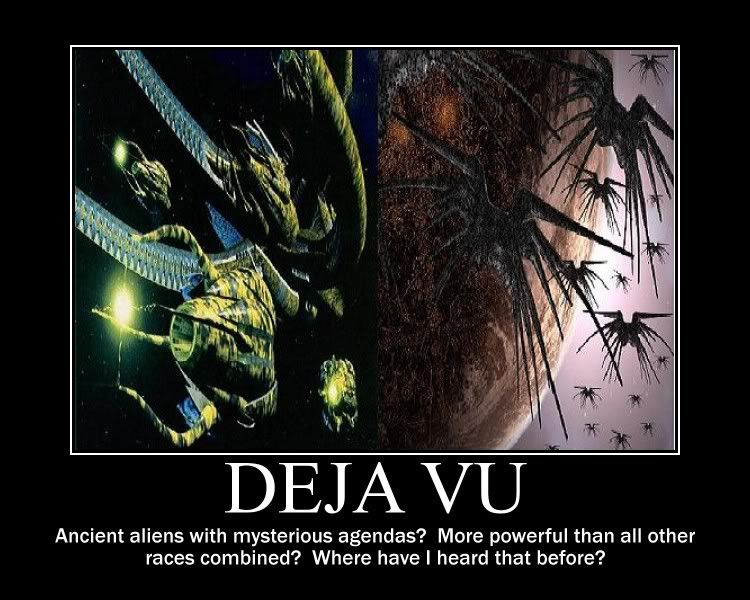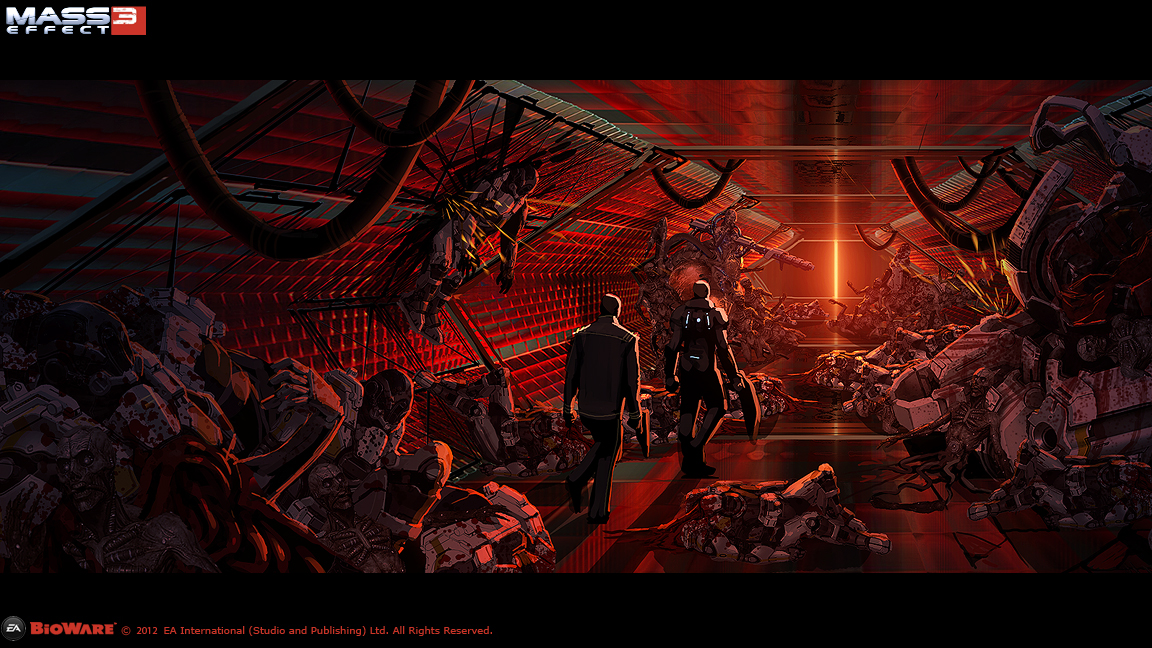As best as I am able to "figure" after many discussions... the game was structured as a series of modules and casually connected together towards the end of the development phase. This is not an uncommon practice in pipeline product development. Considering the Geth and the Krogan story lines are quite polished indicates to me that those where done very early in the development stage (that had to be "right" to justify previous game decision tree flags).
To my knowledge (google.com) some of the key folks that worked on the original 2 titles where otherwise tied up with Star Wars and the rumor is that "if they had an ending in mind, they didn't share it".
That all said I find it likely that the ending as well as the "kid" and perhaps some elements of the crucible where rather late entries into the composition, cobbled together with string and prayer, passed along to the animators to finish up with some CGI. How much of that influenced the launch trailer, and or how much the launch trailer influenced those decisions may not ever be made known.
This inevitably created the plot holes and disconnect of the story progression, messed up the pacing, and crippled the work.
To wax a little philosophical the first game is structured around an old concept brought forward by Thomas Hobbes and his work "leviathan" and the response of the "self made man" of post modernism. This theme is all but lifted from other works of science fiction such as Babylon 5, which also features a space station as the narrative hub as well as massively powerful alien opponents as well as "ancients".
It's really common in SciFy, but I think B5 was clearly a strong reference source.
Dark energy was considered to be part n' parcel of the Reapers agenda, that is, that the universe was "disappearing" leaving more "dark energy" in it's place... and they were both attempting to solve the problem of terminal existence and or act as the force that "mitigated" the self destructive nature of life proper.
Dark Energy was also the McGuffin to explain the biotics and supernatural powers. Essentially it is whatever you need it to be to explain away anything that comes up in continuity.
The Reapers get an out as far as being a big bad if they are used to rationalize dark energy (this is also similar to Babylon 5 and it's use of psychics) it essentially leaves the door open to Reapers being redeemable. Cerberus is also parallel to an earth force known as Psy-Corp within the Babylon 5 universe.
They have government connections and heavy military gear, although ultimately they are revealed as puppets of the "Shadows", and are eventually brought back to the "right" side in the final showdown.
Debate-ably redemption is a reoccurring theme of the series. One explored in the second game to great lengths with the dirty dozen or seven samurai motifs.
http://masseffect.wikia.com/wiki/Mass_Effect:_Redemption
Mac Walters is a comic book writer I suppose.
The second game does not do a lot for the overall trilogy as far as setting up any ending, but it does flesh out many character narratives and through reflecting upon their personal stories a much richer tapestry of the world comes out.
It does set up the Geth and Krogan arcs, which for my money, are the only things in the third game worth 2 pennies.
Lastly the third game... I could drone on and on about everything that is wrong here, suffice to say that there is some major congestion which tells me that multiple people where "chipping in" their thoughts. No one was really at the helm which seems supported by Hudson himself basically authorizing any retcon anyone wanted to offer.
Missing staff, the online component, a less experienced staff, a new engine, and some strange direction choices which seem more a part of marketing decisions than it does critical design or creative decisions painted the product into the corner from which the only escape was "ninja magic smoke bomb god'did'it."
For me there where major problems with some of the game, mechanically. I wasn't sure what the visual language was trying to imply, and the aural aspects where heavily lifted from the previous titles. It all had a very copy-paste feel to it. Likely due to the new engine needing to be in place for the mulitplayer elements to function (they are likely off the shelf and required little internal development).
The ending of Babylon 5's story arc at the end of the Shadow War explores the same themes, essentially doing what ME3 failed to deliver upon; strength to soldier on forged through unification and acceptance of diversity.
As far as the fates of the people on the station?
Make something up, it's what Bioware did.
Your answer is as valid as theirs and twice as thought out.




